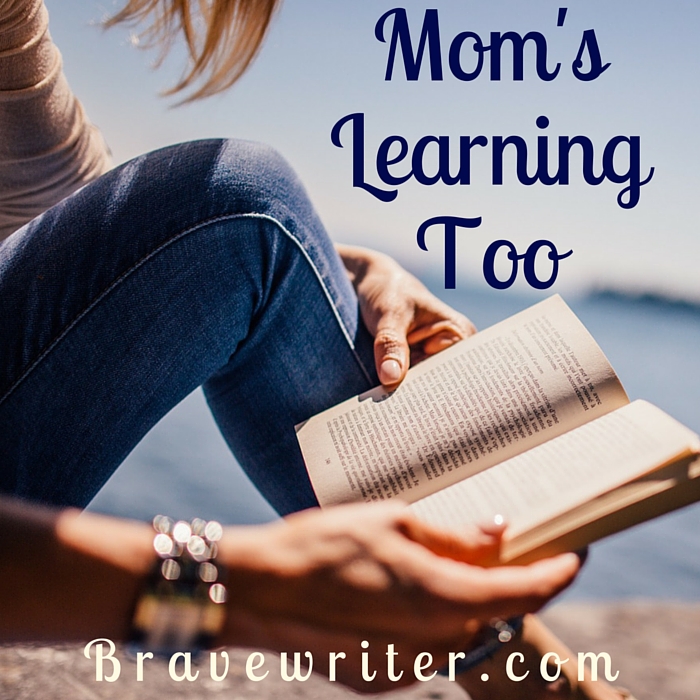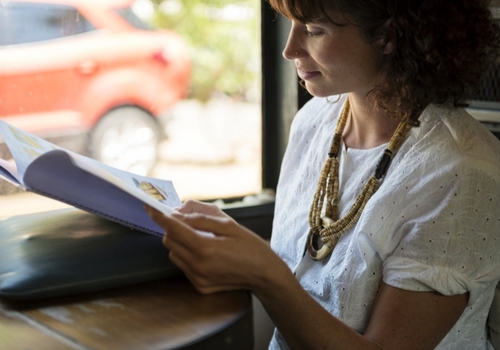
The whole family is learning all the time.
Navajo rugs littered my kitchen table right before naptime. Three little faces smiled up at me with smears of glue on their chins and clippings of construction paper stuck to their t-shirts. We were KONOS homeschoolers and that month, we were firmly ensconced in the Indians unit (Native Americans, really, but I think we weren’t using that nomenclature consistently yet). I had boundless energy for homeschooling in the days when my children were small (6, 4 and toddler). I had hand-drawn a big map of North America that I hung smack in the middle of the living room wall. The map showed color-coded hunting regions for each major Indian tribe or nation. Yeah, I know. Haven’t done it since.
Reality: The kids looked at that map every morning and yet, I guarantee none of them remembers today the names of the tribes, the regions where they hunted, the little paper rugs we made or the original habitats we created in shoe boxes. But I do. I loved all that stuff.
One day at naptime, we read about the Battle of Little Bighorn and the courageous acts of Sitting Bull. My toddler had long since collapsed on my breast. I thrust the nearest scrap of paper (ever ready and willing on my living room floor) into the book to hold my place and cautiously carried the big lug into his bedroom. I hurried the more reluctant 4 and 6 year olds to their beds, flipping on the cassette player with Disney tunes to keep them quiet.
Then, as a woman possessed, I raced back to the couch where three pacifiers and six Legos “greeted” my eager body. Once I’d cleared the couch of debris, I popped the book back open, laid my head against a pillow… and read for an hour. I had to know what happened at that battle. I had to know what Custer’s Last Stand meant and why the Sioux Indians were outraged against our military.
I suddenly realized how hungry for information I had been.
Mind food. It was as if all those years of pregnancy, nursing and baby care came screeching to a halt for an hour and my now subdued, hormonal brain roared back to life. I read with a vengeance.
I finished the chapter before anyone woke up, deeply satisfied.
That’s when I saw the truth:
I wanted to be home educated. I wanted to know things. I reflected with a bit of horror, honestly, that even with a degree in history from UCLA, there were still all kinds of histories I had not studied, had not retained, had not cared about then… but I cared about them now.

I loved learning!
I asked myself:
Who is interested in this material? Who wants to learn it?
I did. I wanted to learn about everything!
Then I wondered to myself:
Do the kids need to learn it just because I think it’s interesting, because a curriculum says so, because they should learn it?
A trickier answer followed and it took years to flesh itself out.
Kids love to learn. They’re open to all kinds of information, projects, events, books, movies, experiences. But they aren’t adults. Their ability to assimilate and use the information we give them is not comparable to ours. They live in what I call “first exposure” stage (where they hear about things for the first time, where they lay groundwork for second and third exposures), while we parents live at the other end of the continuum – the synthesis stage where we make extensive connections and fill in gaps almost effortlessly.
Exposure is great (needed, valuable, important). It’s not the same as mastery. In fact, unwanted exposure, first exposure mishandled can have an undermining effect, deterring a child from wanting to take a second look later when more mature.
So I faced a dilemma early in my homeschooling career. What is the purpose of homeschooling our kids?
- Is it to satisfy my renewed enthusiasm for learning things I haven’t learned well?
- Is it a chance to give my kids what I didn’t get assuming that I could have “gotten it” if I had been home educated?
- Is it about “covering” some set of criteria by the time they’re 18, as though if they haven’t gotten to it by then, they’ll never get it?
- Or is their education about them as they are now, their needs, their abilities, their first exposures?
If you have that hunger to know, feed it. Live it in front of your children.
Let them see how it’s done.
Over time, I saw that my desire to homeschool could not be a substitute for my personal hunger to flesh out my education. The education of my children had to be about them – their readiness, interest, capacity to retain, their hunger to know. But if in that process I discovered what I’d like to learn, if the homeschool catalogs advertised fabulous books and aspects of history, art and science I had somehow missed as a child, I could fill in my own gaps without making my children learn them just so that I could learn them now.
I also saw that just because I deemed something valuable to know didn’t mean it was valuable to know as a child. All learning and exposures didn’t have to happen by age 18, as I was proving in my own adulthood.
It was at that point that we went from school-at-home where mom was the curriculum director, educator, and principal (and the kids were the students) to home education (mom and kids both on a learning journey – sometimes shared, sometimes parallel, sometimes kids teach and mom learns, sometimes mom teaches and kids learn). The curriculum is as diverse and varied as the world around us.
If you have that hunger to know, feed it. Live it in front of your children. Take time for it. Read books, study, use the middle of the day to watch that PBS special on art history or to go to a bird watching training. Let your children see how it’s done. Being an engaged learner for your own sake is the most important lesson your kids can learn from you… that learning is a lifetime habit and source of joy, and that it’s important enough to demand your time and energy. They’ll be fine, sitting on the floor playing with Legos while you get a full drink of French Impressionist painters. Promise.


















